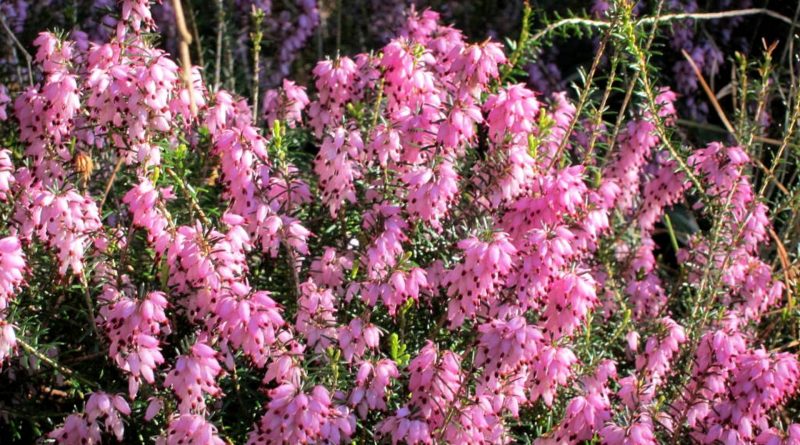Erica carnea
Erica carnea
The Erica carnea (Erica carnea L.) is a perennial spontaneous plant of the family of the ericaceae.
Systematics –
The Erica carnea, from the systematic point of view, belongs to the Eukaryota Domain, Kingdom Plantae, Subarranean Tracheobionta, Magnoliophyta Division, Magnoliopsida Class, Order Ericales, Family Ericaceae and therefore to the Erica Genus and to the E. carnea Species.
Etymology –
The term carnea refers to the color of the flowers very similar to that of the living flesh and derives from the Latin carō, carnis; the epithet Erica (like all the ericaceae) derives from the Greek ἐρείκω ereíko mince, crumble: for the habitat of debris.
Geographic Distribution and Habitat –
Erica carnea is characteristic because it forms flowery cushions for its development especially in width. It is a typical species of the Alps, the northern Apennines and the Apuan Alps and lives at altitudes of up to 2500 m above sea level, especially in meadows, pastures, on rocky and sunny slopes and in bright areas bordering coniferous woods.
Description –
The Erica carnea is characterized by a thin and woody stem from which sprouting needle-like leaves of vivid green (but also of bronze or dark yellow color, in particular conditions of exposure to light), which cover it for its entirety. The heather carnea is characterized by the stem creeping on the ground, up to 40 cm high. It possesses flowers gathered in apical bunches of pink color more or less shaded with the shape of the corolla that recalls that of a barrel. Flowering occurs from February to June. It is a suffruticose species, often as herbaceous, evergreen and needle-like. The Erica carnea is a plant very resistant to cold so that it is not uncommon to see the pink flowers that appearing in the snow at the end of winter, announce the spring.
Cultivation –
Erica carnea, being a particularly rustic plant, can be easily cultivated; this is why it is considered a colonizing plant and to re-naturalize particularly degraded environments. It is a species much appreciated by bees and the honey obtained from its pollen is particularly prized.
Uses and Traditions –
The flowers of this plant are officinal and the plant is medicinal. They have very strong diuretic properties and are used for the preparation of urinary teas. These also have an antiseptic action due to the presence of arbutin; they are often used in cases of cystitis, especially prostatic and preferred to other preparations, as they are non-toxic. Given the excellent honey that can be obtained would be interesting to produce the monofloral one but it is difficult because these small shrubs are present only in restricted areas, so they should be grown in larger areas.
Preparation Mode –
With Erica you can prepare herbal teas for internal use or infusions for external use; another application is to add flowers to the bath water with a soothing effect of the pain caused by rheumatism. In addition, local compresses prepared with dried leaves decongest the inflamed skin. In the use of Erica preparations, one must be careful because, even if they are not toxic, they must be avoided in case of liver failure or hypersensitivity to one or more components.
Guido Bissanti
Sources
– Wikipedia, the free encyclopedia.
– Treben M., 2000. Health from the Pharmacy of the Lord, Advice and experience with medicinal herbs, Ennsthaler Publisher
– Pignatti S., 1982. Flora of Italy, Edagricole, Bologna.
– Conti F., Abbate G., Alessandrini A., Blasi C. (edited by), 2005. An annotated checklist of the Italian vascular flora, Palombi Editore.
Warning: Pharmaceutical applications and alimurgical uses are indicated for informational purposes only and do not in any way represent a medical prescription; there is therefore no liability for their use for curative, aesthetic or food purposes.


